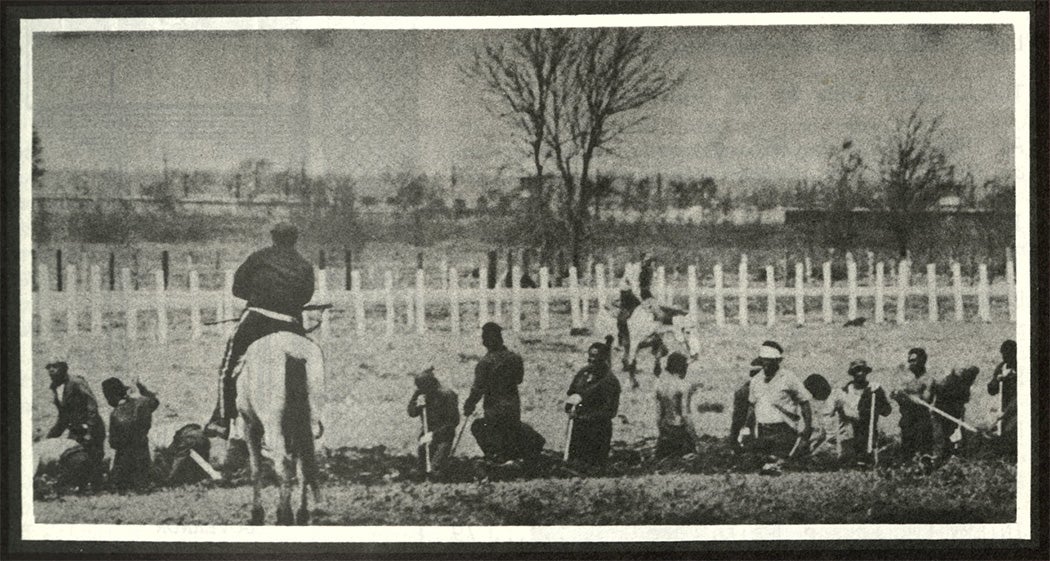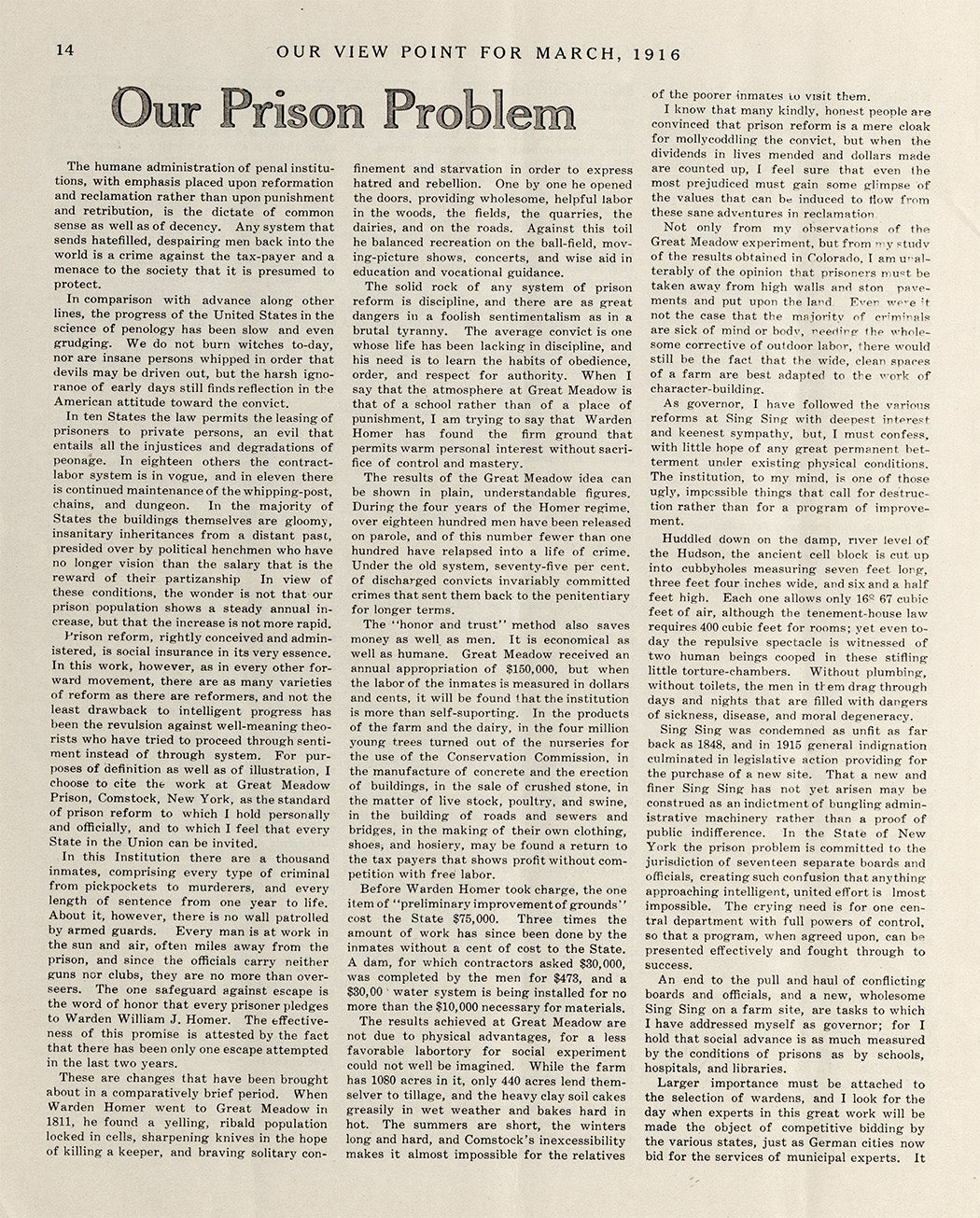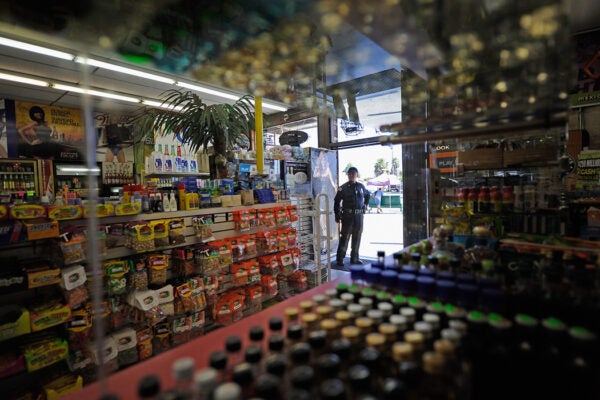In a 2019 issue of The Reflector, a prison newspaper, Catherine Nelson shared a common grievance among the incarcerated.
“The only problem I have with my job is the pay hasn’t increased in over two decades,” wrote Nelson. At the time, she worked in a prison factory where she was forced to save two weeks’ pay “to buy one 18-pack of feminine hygiene pads,” a basic necessity.
Most states compensate the incarcerated for labor, but few pay living wages, because they don’t have to—by law.
The Thirteenth Amendment, ratified in 1865, abolished slavery and involuntary servitude with one exception: “Neither slavery nor involuntary servitude, except as a punishment for crime… shall exist within the United States.” Today, prisons broadly force people in custody to work, from toiling on plantations to serving as aides to prisoners in the facility’s hospice. Although the Thirteenth Amendment eradicated chattel slavery, it allowed another servile structure, convict leasing, to be created. Convict leasing still exists in a lesser form.
Since the Constitution is silent on whether the forced laborers needed to be compensated, many have challenged the practice of involuntary servitude, highlighting the fact that most prisons either do not pay anything or pay mere cents. The Walk Talk, a prison newspaper out of Louisiana, devoted an entire segment to the court cases that have upheld the practices. In the “Legal Corner” section of the June 15, 2007, issue, the newspaper’s editors explain that “in Mikeska v. Collins, the United States Court of Appeals, Fifth Circuit held: Compelling an inmate to work without pay is not unconstitutional [because] ‘compensating prisoners for work is not a constitutional requirement…’”

A contemporary, politically correct, viewpoint portrays incarceration as a rehabilitative tool designed to better society. If a fair system of payment for carceral employment were put in place, this viewpoint might be borne out. However, the existing system limits the legal, meaningful options inmates are given to survive in prison, compelling many to procure daily necessities—such as feminine hygiene products—through illegal means.
A “prison philosophy” first elucidated 100 years ago says that formerly incarcerated people will take negative behaviors learned in prison into the free world upon release, counteracting the perceived goal of rehabilitation. Habit is formed within the person, not the place. If the result of carceral employment doesn’t aid the betterment of society, rehabilitation can’t be considered a true goal of prison labor systems.
The American Prison Newspapers collection offers a glimpse of how rehabilitation has been used as a pretense to implement and continue exploitative prison labor practices. Though small, the collection illustrates that the current American prison labor system is built upon the archaic and intolerable practice of convict leasing.
Rooted in Slavery
Penal servitude didn’t originate in southern states after the Civil War, according to “Barbarism and Progress” by Steve Fraser and Joshua B. Freeman. In fact, Auburn Prison in New York first leased prison labor to private industrialists in “workshops, factories, and fields” in the 1820s. In those days, the incarcerated were mostly “white men since the slave masters had a free hand” to deal with their enslaved property.
After President Abraham Lincoln issued the Emancipation Proclamation, as Fraser and Freeman explain, “the convict-lease system metamorphosed” into a tool used to “control and fix in place the newly emancipated slave.”
To garner the labor lost after the emancipation of Black slaves, southern states enacted Black codes, or prejudicial laws, that sent Black people to jail for minor offenses, such as vagrancy. A wealthy business owner would purchase the incarcerated person’s bond from the state in exchange for a period of forced servitude to pay off the debt. Convict leasing, also called peonage, juxtaposed the infrastructure of the Old English debtor’s prison with the barbarism of chattel slavery to bolster American capitalism.
Fraser and Freeman note that convict leasing should be a reminder “of the unbalanced racial profile of America’s bloated prison population today,” and for good reason. Public outcry forced New York to end the practice in the late 1880s, but it was replaced in the South by “the state-run chain gang” and operated “well into the 1920s.” In short, convict leasing replaced slavery to fulfill financial goals, not to institute rehabilitation.

The rhetorical shift of using prison labor for rehabilitation began at the turn of the twentieth century and is best demonstrated by New York’s one-time governor, Charles Whitman. The prison newspaper Our View Point reprinted an article written by Whitman for The Century Magazine in 1916. Whitman admonished enablers of southern peonage, where officials used “the whipping-post, chains, and dungeon” to keep prisoners working while advocating for a revolutionary system of prison labor at Great Meadow Prison in Comstock, New York.
According to Whitman, “the punitive theory of imprisonment” had proved “a tragic failure at every point.” He praised Warden William J. Homer for opening Great Meadow’s doors to provide “wholesome, helpful labor in the woods, the fields, the quarries, the dairies, and on the roads.” He also boasted that the incarcerated performed “three times the amount of work” as their free-market competition and at no cost to the state. Great Meadow prisoners even built a dam “for which contractors asked $30,000” at a cost of only $473.
Whitman pointed to only about 100 of 1,800 paroled men who recidivised after release from Great Meadow as proof of successful rehabilitation through labor. To his credit, he advocated for an “employment bureau” that would offer “some measure of compensation” for prison labor, either to support their family or to use upon release. At the time, incarcerated men earned no money for their work and returned to society with only a $10 gate check to restart their lives.
Although the men incarcerated at Great Meadow Prison were not victims of convict leasing, the financial interests of New York state superseded the rhetoric of labor for rehabilitation. And some in the public remained unsupportive of prison labor. In response to a 1946 editorial, a letter reproduced in Shadows rebuked such programs because “sooner or later,” they “degenerate into the same old thing—exploitation of labor.”
The Here and Now
Contemporary prison labor practices don’t treat the incarcerated any better. I’ve been incarcerated for twenty-two years in North Carolina. Years ago, I worked for North Carolina Correction Enterprises (NCCE), a state-owned conglomerate made up of work farms and industrial plants peppered across the state at various prisons. Incarcerated people work forty-hour weeks but can earn no more than $0.36 an hour, or about $25 a week. NCCE replaced convict leasing by repurposing prison labor strictly for the state, not private industry, during the early 1970s.
Although I don’t agree with forced labor, some jobs provide more than money. The Print Plant at Nash Correctional, where I once worked, offered an array of apprenticeships awarded by the North Carolina Department of Labor. I earned an apprenticeship as a Graphic Illustrator in three years. Many incarcerated people could benefit from learning a marketable skill they could use upon release, but those opportunities are few. Aside from a few culinary programs across North Carolina prisons, the Print Plant is the only enterprise that offers apprenticeships, impacting a select few people incarcerated within the state.
Currently, I work as a dorm janitor. I earn $2.80 a week, barely enough to purchase a deodorant stick from the commissary for $2.69 before taxes. Low-paying, menial labor jobs like mine make up most of the employment opportunities in North Carolina prisons. Until 1994, prisoners in Louisiana could donate plasma and earn $12, twice per week, totaling up to $1,152 per year. It was enough that some even sent money home, quite opposite to today where most of us rely on our families, themselves struggling, to send money to us so we can meet our basic needs. I would go to great lengths to no longer be a burden on those I love.
Wordly Problems in Prison
The rising cost of goods outside prisons presents another problem for the incarcerated. When prices in the outside world rise, they rise in prison, too. However, we can’t apply for a better job or enroll in college to learn more marketable skills. Our wages are never raised. These conditions can compel many to live illegally in prison.
In 2022, the prison newspaper First Amend This! reported on commissary price increases caused by inflation in Idaho. In general, all prices in Idaho prisons rose 8.5% percent to mirror increases “happening in the community,” citing the Consumer Price Index. However, the price of a Chick-O-Stick increased from $0.37 to $0.91 overnight, a much steeper increase than the noted 8.5 percent. First Amend This! added that Keefe, Idaho prisons’ commissary provider, forked over a portion of profits to the Idaho prison department “worth a minimum of $1,250,000 plus 40%” of the gross that exceeds the sales target. When Keefe raised prices, the state was guaranteed more money on the back end at the expense of underpaid incarcerated people.
Keefe uses the labor of incarcerated women, whose wages that range $1.35 to $2.00 per hour and aren’t subject to cost-of-living adjustments even as the costs of basic necessities increase, insulating the company from increased labor costs that many other businesses experience. Incarcerated people are therefore subject to inflation as consumers but derive no benefit from the increasing wages that have accompanied it in the wider economy. As a monopoly within the prison system, Keefe has “next to no incentive” to “offer special discounts, provide high-quality products, or be proactive towards complaints.” Expensive as they may be—supposedly contractually obligated to be on par with convenience store prices—commissary products are of infamously low quality, yet there’s no consumer choice behind bars.
Weekly Newsletter
I earn barely more than someone who was forced to toil at Angola’s plantation in the 1950s, despite prices increasing more than ten-fold since then. Were it not for outside financial support, I too wouldn’t be able to meet my basic needs. Not only does the current system of carceral employment resemble the age-old system of convict leasing, it harkens back to its predecessor, enslavement.
The implications are as pragmatic as they are ideological. As Charles Whitman recognized in 1916, releasing people with nothing more than “gate money”—then $10 and a mere $40 a hundred years later—was a recipe for disaster. Then as now, people leaving prison had diminished employment prospects, and without enough money to get back on their feet, recidivism rates increased. Yet still, and even more since inflation, the penance paid to incarcerated people in states where wages are paid at all is barely enough to meet their needs during their incarceration, much less to pay their child support or rebuild their lives after release.
In a 2023 article by the Alexandra Arriaga at the Marshall Project, Shakeil Price, an incarcerated man in New Jersey state, explained the result of combining low wages for labor with inflation. “With the prison ecosystem feeling the effects of society’s inflation,” he writes, “the poor get poorer and then the poor get desperate.”
Support JSTOR Daily! Join our membership program on Patreon today.







